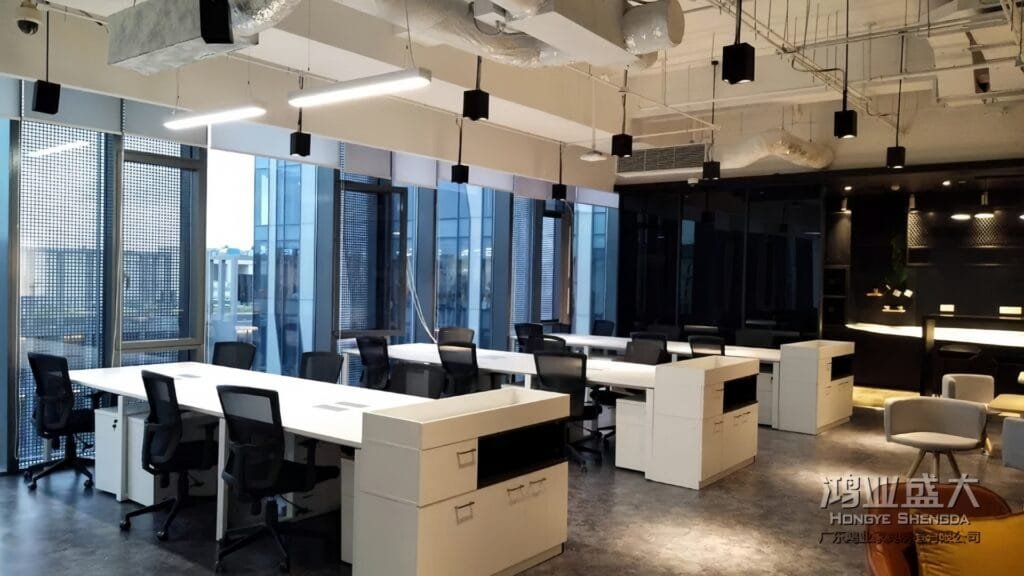
The modern workplace is far more than just a space where employees gather to complete tasks. It’s an environment that directly influences how people feel, think, and perform on a daily basis. At the center of this environment is office furniture-the chairs, desks, storage solutions, and collaborative spaces that employees interact with for hours each day. Office furniture plays a crucial role in shaping employee experiences, affecting everything from physical comfort to mental well-being and ultimately impacting both satisfaction and productivity.
Research has shown that thoughtfully designed workspaces with appropriate furniture can increase productivity by up to 32%, while reducing absenteeism and improving overall employee morale. Companies that invest in quality office furniture are essentially investing in their most valuable asset: their people. When employees feel physically comfortable and emotionally supported by their work environment, they’re more likely to remain engaged, focused, and loyal to the organization.
This article explores the multifaceted relationship between office furniture and workplace performance, examining how ergonomic designs, aesthetic elements, and thoughtful space planning contribute to creating environments where employees can thrive. We’ll investigate the science behind workplace comfort, analyze cost-benefit considerations, and provide practical guidance for businesses looking to optimize their office furniture investments.
The Ergonomic Advantage: Physical Comfort and Health
The connection between physical comfort and workplace productivity cannot be overstated. Ergonomic furniture is designed specifically to support the human body in ways that reduce strain, prevent injury, and promote overall well-being. When employees are physically comfortable, they can focus more effectively on their work without the distraction of discomfort or pain.
Proper lumbar support in office chairs helps maintain the natural curve of the spine, reducing the risk of back pain that affects millions of office workers. Adjustable height desks allow employees to alternate between sitting and standing throughout the day, promoting better circulation and reducing the negative health impacts of prolonged sitting. These ergonomic features aren’t just luxuries- they’re essential tools for preventing common workplace injuries and health issues.

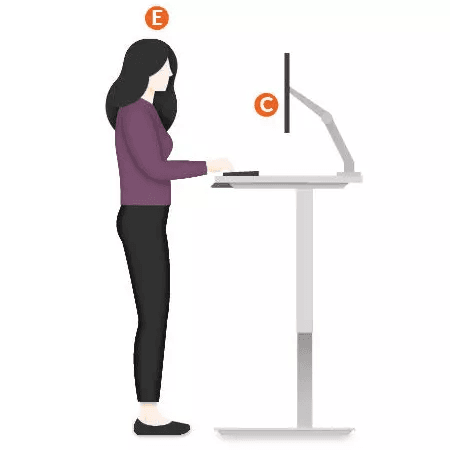
The health benefits of ergonomic furniture extend beyond immediate comfort. Long-term use of properly designed furniture can help prevent chronic conditions such as repetitive strain injuries, back problems, and circulatory issues. This translates directly to reduced absenteeism, lower healthcare costs, and improved employee retention. In fact, companies that invest in ergonomic furniture often see a significant reduction in workers’ compensation claims related to musculoskeletal disorders.
Consider the case of a mid-sized financial services firm that replaced standard office chairs with fully adjustable ergonomic models featuring proper lumbar support, adjustable armrests, and customizable seat height. Within six months, the company reported a 75% reduction in complaints about back pain and a 15% decrease in sick days related to musculoskeletal issues. Employee satisfaction surveys showed a marked improvement in comfort ratings, with 87% of employees reporting that they felt better supported throughout their workday.
| Feature | Standard Office Chair | Basic Ergonomic Chair | Premium Ergonomic Chair |
| Lumbar Support | Minimal or none | Adjustable | Dynamic, responsive |
| Armrest Adjustability | Fixed position | Height adjustable | 4D adjustable (height, width, depth, angle) |
| Seat Depth | Fixed | Slightly adjustable | Fully adjustable |
| Recline Function | Basic tilt | Multi-position lock | Synchronized tilt with tension control |
| Material Quality | Basic fabric | Breathable mesh | Premium materials with temperature regulation |
| Price Range | $100-200 | $200-500 | $500-1,500+ |
| Warranty | 1-2 years | 5 years | 10-15 years |
Beyond chairs, height-adjustable desks have become increasingly popular as awareness of the dangers of prolonged sitting has grown. These desks allow employees to alternate between sitting and standing throughout the day, promoting movement and reducing the strain associated with maintaining a single position. A technology company in Seattle implemented sit-stand desks across their entire office and found that 78% of employees reported feeling more energized throughout the day, while 65% noted improved focus and concentration.
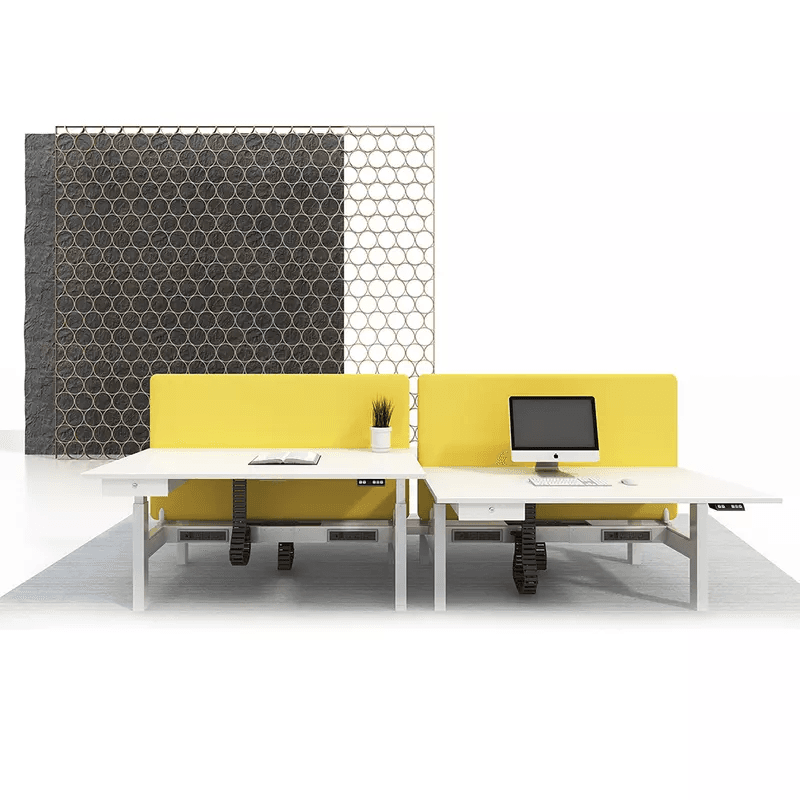

Hongye Height Adjustable Standing Desk for Office| HY-HAD001
Ergonomic accessories such as keyboard trays, monitor arms, and footrests further enhance workplace comfort by promoting proper alignment and reducing strain on the neck, shoulders, and wrists. These seemingly small additions can make a significant difference in employee comfort and health, particularly for those who spend many hours at their desks.
The investment in ergonomic furniture should be viewed as a strategic business decision rather than simply an expense. The return on investment comes in the form of healthier, more comfortable employees who can work more effectively and with fewer interruptions due to discomfort or injury.
Psychological Impact: How Furniture Affects Mood and Mindset
The influence of office furniture extends well beyond physical comfort- it plays a significant role in shaping employees’ psychological well-being and mindset. Workplace design and furniture choices send powerful messages about company culture, values, and how much the organization values its people.
Aesthetic elements such as color, material, and design style can significantly impact mood and emotional state. Warm, natural materials like wood create feelings of comfort and connection to nature, while sleek, modern designs might convey innovation and forward-thinking. A financial consulting firm in Chicago redesigned their office with a mix of natural wood elements and contemporary furniture, reporting a 23% increase in employee satisfaction scores related to workplace environment within the first quarter after the change.
The psychological comfort provided by appropriate furniture can be just as important as physical ergonomics. Private spaces with sound-absorbing furniture allow for concentration and focused work, while collaborative areas with comfortable seating encourage interaction and idea-sharing. This balance supports different work styles and tasks, acknowledging that employees need various environments throughout their workday.
| Furniture Element | Psychological Impact | Productivity Effect |
| Natural Materials (wood, stone) | Reduced stress, increased connection to nature | Improved focus, reduced anxiety |
| Color Choices | Mood influence (blue for calm, yellow for creativity) | Task-appropriate energy levels |
| Lighting Integration | Affects alertness, mood, and eye strain | Better concentration, reduced fatigue |
| Privacy Elements | Sense of security, reduced distraction | Enhanced focus for complex tasks |
| Collaborative Seating | Promotes belonging and team cohesion | Increased idea sharing and innovation |
Personalization options in furniture also contribute significantly to psychological well-being. When employees can adjust their workspace to suit their preferences-whether through height-adjustable desks, movable privacy screens, or adaptable storage solutions-they gain a sense of control over their environment. This autonomy correlates strongly with job satisfaction and engagement.
A tech startup in Austin implemented a flexible furniture system that allowed employees to easily reconfigure their workspace based on their needs. The result was a 27% increase in reported job satisfaction and a 19% improvement in self-reported productivity. Employees specifically mentioned feeling more valued because the company had invested in furniture that adapted to their needs rather than forcing them to adapt to static furniture.
The message sent by furniture quality shouldn’t be underestimated. High-quality, well-maintained furniture communicates that the company values its employees and is willing to invest in their comfort and well-being. Conversely, outdated, damaged, or inadequate furniture can create feelings of resentment and underappreciation. A manufacturing company that upgraded from basic office furniture to mid-tier ergonomic solutions saw employee retention rates improve by 18% in the following year, with exit interviews from previous years revealing that inadequate facilities had been a contributing factor in departures.
Space Planning and Furniture Configuration
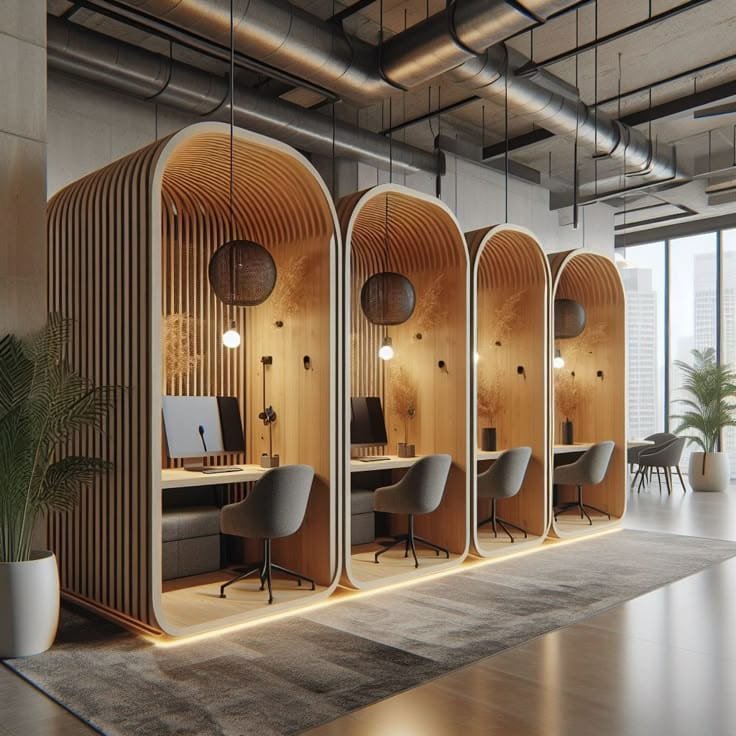
How office furniture is arranged within a space can be just as important as the furniture itself. Thoughtful space planning creates environments that support different work styles, foster collaboration when needed, and provide privacy when necessary.
The trend toward open office layouts has been both praised and criticized. While open plans can encourage collaboration and communication, they can also lead to distraction and reduced productivity for tasks requiring deep focus. The solution lies in creating a balanced environment with a variety of spaces suited to different activities.
A law firm in Boston implemented a hybrid approach, maintaining private offices for focused work while creating collaborative zones with comfortable lounge furniture for team discussions and client meetings. The result was a 22% increase in billable hours and significantly improved client satisfaction scores, as attorneys could choose the appropriate setting for each task.
| Office Layout Type | Pros | Cons | Best Applications |
| Open Plan | Encourages collaboration, efficient use of space, flexible | Noise distractions, lack of privacy, potential for interruptions | Creative teams, collaborative projects, startups |
| Private Offices | Privacy for focused work, confidentiality, status recognition | Space inefficiency, potential isolation, higher cost | Legal, financial, executive functions |
| Hybrid/Activity-Based | Flexibility, supports various work styles, balanced | Requires more planning, potential territory issues | Modern organizations with diverse work needs |
| Cubicle Systems | Balance of privacy and openness, cost-effective | Can feel impersonal, dated aesthetic | Administrative functions, call centers |
| Hot-Desking | Space efficiency, encourages movement, cost savings | Lack of personalization, potential hygiene concerns | Mobile workforces, consulting firms |
Furniture mobility has become increasingly important as workplaces evolve toward more flexible models. Modular furniture systems, easily movable tables and chairs, and reconfigurable partitions allow spaces to transform based on changing needs. A marketing agency in Portland implemented a fully modular furniture system that could be reconfigured for different project teams and work modes. They reported a 35% increase in cross-team collaboration and a 28% improvement in project completion times.
Proximity and accessibility considerations in furniture arrangement can significantly impact workflow and collaboration. Thoughtfully placed collaborative furniture-such as comfortable seating areas, shared tables, and whiteboard walls-can create natural gathering points that encourage spontaneous interaction and idea sharing. A software development company created “collision zones” with comfortable seating and writable surfaces near high-traffic areas, resulting in a 40% increase in documented cross-department collaborations.
The balance between openness and privacy remains one of the most challenging aspects of office design. While open spaces facilitate communication, they can also lead to distraction and reduced productivity for tasks requiring concentration. Modern solutions include acoustic furniture such as high-backed booths, sound-absorbing partitions, and enclosed pods that create privacy without completely separating employees from the larger environment.
Cost-Benefit Analysis: The ROI of Quality Office Furniture
Investing in quality office furniture represents a significant financial commitment for any organization. However, when analyzed through the lens of return on investment, these expenditures often prove to be sound business decisions with measurable benefits.
The initial cost of quality office furniture must be weighed against its longevity, impact on productivity, and effect on employee health and satisfaction. While premium ergonomic chairs might cost 3-5 times more than basic models, they typically last significantly longer and provide benefits that far outweigh the price difference.
| Furniture Investment Level | Initial Cost | Expected Lifespan | Productivity Impact | Health Benefits | Total ROI Estimate |
| Basic/Budget | Low ($100-300 per workstation) | 2-3 years | Minimal to negative | Few to none | -5% to +5% |
| Mid-Range | Moderate ($500-1,500 per workstation) | 5-7 years | Moderate positive | Reduced discomfort | +15% to +25% |
| Premium/Ergonomic | High ($1,500-3,000+ per workstation) | 10-15 years | Significant positive | Measurable health improvements | +30% to +50% |
| Custom/Specialized | Very High (varies widely) | 10-20 years | Highly tailored to specific needs | Optimized for specific requirements | Varies based on application |
A large insurance company conducted a detailed cost-benefit analysis when considering an office furniture upgrade. They found that while premium ergonomic furniture would cost approximately $2,200 per employee (compared to $800 for basic furniture), the expected benefits-including a projected 12% productivity increase, 8% reduction in absenteeism, and 15% improvement in retention rates-would result in the investment paying for itself within 14 months.
Furniture durability and warranty coverage are important factors in the cost equation. Quality office furniture typically comes with warranties ranging from 5 to 15 years, significantly reducing the lifetime cost of ownership compared to budget options that might need replacement every 2-3 years. A healthcare administration office that opted for premium furniture with a 12-year warranty calculated a 32% lower total cost of ownership over 15 years compared to replacing budget furniture every 3 years.
The hidden costs of poor furniture choices can be substantial. These include increased absenteeism due to discomfort or injury, reduced productivity from distraction or fatigue, and higher turnover rates when employees seek more comfortable work environments. A retail company headquarters that maintained outdated, uncomfortable furniture found through exit interviews that workplace discomfort was cited as a contributing factor in 23% of voluntary departures.
Scalability and adaptability of furniture systems should also factor into ROI calculations. Modular systems that can be reconfigured as organizational needs change provide better long-term value than fixed solutions that might become obsolete with office redesigns or workforce changes.
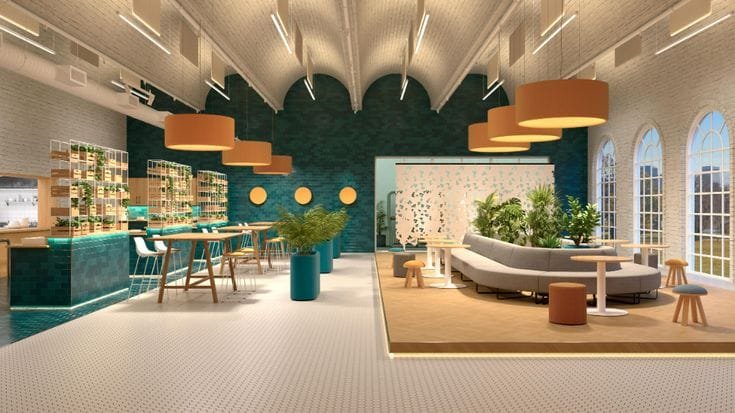
Conclusion
The impact of office furniture on employee satisfaction and productivity is profound and multifaceted. From the physical benefits of ergonomic design to the psychological effects of aesthetics and space planning, furniture choices influence nearly every aspect of the workplace experience. Companies that recognize this connection and invest strategically in quality office furniture position themselves for success by creating environments where employees can perform at their best.
The most effective approach to office furniture selection balances several key considerations: ergonomic support for physical health, psychological comfort through appropriate aesthetics and personalization options, thoughtful space planning that accommodates various work styles, and a clear understanding of the return on investment that quality furniture provides.
As workplace trends continue to evolve-with increased focus on flexibility, employee well-being, and creating environments that attract and retain top talent-furniture will remain a critical component of successful workplace strategy. Organizations that view furniture as a strategic investment rather than merely a necessary expense will reap the benefits of improved employee satisfaction, enhanced productivity, and ultimately, stronger business performance.
Frequently Asked Questions
What are the most important ergonomic features to look for in an office chair?
The most important ergonomic features in an office chair include adjustable lumbar support that maintains the natural curve of the spine, seat height adjustability to ensure proper positioning relative to the desk, adjustable armrests that support the arms without causing shoulder strain, and a seat depth that allows for proper back support while leaving a few inches between the edge of the seat and the back of the knees. Recline functionality with tension control allows for movement throughout the day, which is essential for reducing static loading on the spine. The chair should have a five-point base for stability and high-quality casters appropriate for your flooring. Materials should be breathable to prevent heat buildup during long periods of sitting. For employees with specific needs, features like adjustable headrests or forward tilt options might also be important. Remember that the best ergonomic chair is one that fits the individual using it-there’s no one-size-fits-all solution, which is why adjustability is so crucial.
How can small businesses with limited budgets improve their office furniture without breaking the bank?
Small businesses can improve their office furniture cost-effectively by prioritizing essential ergonomic items first, particularly quality chairs that will have the most immediate impact on comfort and health. Consider refurbished or pre-owned high-end furniture from reputable dealers, which often costs 50-70% less than new items while maintaining quality. Phased implementation allows for spreading costs over time by upgrading the most critical areas first. Look for modular, scalable systems that can grow with your business rather than requiring complete replacement. Many manufacturers offer mid-range lines that incorporate key ergonomic features without premium pricing. Leasing options can provide access to better furniture with manageable monthly payments. Don’t overlook ergonomic accessories like monitor arms, keyboard trays, and footrests that can significantly improve comfort even with existing furniture. Finally, negotiate with vendors for package deals, especially when purchasing multiple items, and ask about floor models or last year’s designs, which often come with substantial discounts while still providing excellent quality and full warranties.
How does office furniture impact remote or hybrid workers who only come to the office occasionally?
For remote or hybrid workers, office furniture takes on a different but equally important role. When employees visit the office occasionally, the furniture should facilitate the primary reasons they come in: collaboration, connection, and specific work activities that benefit from in-person interaction. Easily adjustable furniture becomes even more critical, as these workers need to quickly adapt shared workstations to their ergonomic needs without spending excessive time on adjustments. Comfortable collaborative spaces with appropriate acoustics and technology integration support effective meetings and team activities. Touchdown stations with high-quality ergonomic features allow for productive individual work between collaborative sessions. The psychological aspect is particularly the office furniture and environment should create a welcoming, comfortable experience that makes the commute worthwhile and reinforces company culture and connection. Organizations should also consider providing guidance or stipends for home office furniture, ensuring that remote work environments are equally supportive of productivity and health.
What furniture considerations are most important for different types of work activities?
Different work activities require specific furniture considerations to optimize performance. For focused individual work, provide chairs with good ergonomic support, adjustable desks, and acoustic solutions that minimize distraction. Consider privacy screens or enclosed spaces for tasks requiring concentration. For collaborative activities, implement comfortable seating arranged to facilitate eye contact and conversation, tables at appropriate heights for either sitting or standing collaboration, and integrated technology for sharing information. Creative work benefits from varied posture options like lounge seating, standing-height tables, and informal spaces that stimulate different thinking patterns. Customer-facing roles require furniture that presents a professional image while remaining comfortable for both employees and visitors-consider the visual impression and comfort of guest seating. Technical work with specialized equipment needs furniture designed to accommodate multiple screens, specialized tools, or reference materials with appropriate reach zones and cable management. The best workplaces provide a variety of settings with furniture optimized for different activities, allowing employees to choose the appropriate environment for their current task.
How can office furniture be used to reflect and enhance company culture?
Office furniture serves as a powerful, tangible expression of company culture and values. To reflect an innovative, forward-thinking culture, select modern designs with clean lines, integrated technology, and flexible configurations that adapt to changing needs. For companies emphasizing sustainability, choose furniture made from environmentally responsible materials, with certifications like GREENGUARD or FSC, and designs focused on longevity rather than trends. To promote collaboration and transparency, implement open layouts with shared workspaces, comfortable gathering areas, and minimal barriers between teams. Companies valuing employee wellbeing should invest in premium ergonomic solutions, biophilic elements, and spaces designed for both productivity and comfort. Brand identity can be reinforced through furniture colors, materials, and styles that align with visual branding-whether that’s sophisticated and traditional or playful and creative. The arrangement of furniture also communicates values: hierarchical organizations might provide different furniture based on position, while more egalitarian cultures might offer similar quality across all levels. Remember that furniture choices send strong signals about what and who the company values, so ensure these choices authentically reflect the culture you want to create.
What are the emerging trends in office furniture that focus on employee wellness?
Emerging office furniture trends increasingly focus on comprehensive employee wellness, going beyond basic ergonomics. Active furniture designs encourage movement throughout the day, including treadmill desks, bicycle desks, and balance ball chairs that promote physical activity while working. Biophilic furniture elements incorporate natural materials, living plants, and nature-inspired designs to reduce stress and improve air quality. Acoustic furniture with sound-absorbing properties helps create quieter environments that reduce noise-related stress and distraction. Adaptable privacy solutions like movable screens, pods, and booths allow employees to control their level of privacy and sensory input based on their current needs and tasks. Integrated technology that minimizes physical strain includes wireless charging built into surfaces, cable management solutions, and furniture with embedded controls for lighting and climate. Furniture with antimicrobial surfaces and easily cleanable materials address heightened health concerns. Smart furniture that tracks usage patterns and automatically adjusts to user preferences helps optimize comfort without manual adjustments. The most forward-thinking organizations are implementing furniture systems designed for neurodiversity, with options that accommodate different sensory preferences and work styles, recognizing that employee wellness includes creating environments where all employees can thrive regardless of their neurological differences.


